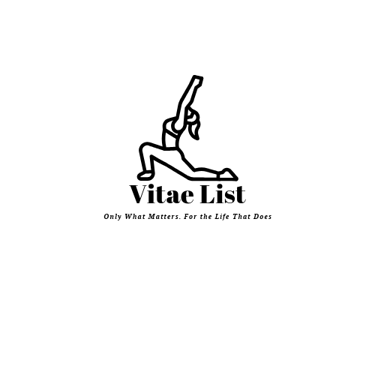Injury Prevention Through Strength: Mobility, Form, and Recovery Strategies
Strength training is one of the best ways to prevent injuries—if done correctly. This article explores how mobility work, proper form, and recovery strategies create a balanced training approach that keeps you strong, resilient, and injury-free.
WELLNESS
Vitae List
10/2/20253 min read


Injury Prevention Through Strength: Mobility, Form, and Recovery Strategies
Disclosure: Vitae List is a participant in the Amazon Services LLC Associates Program, an affiliate advertising program designed to provide a means for sites to earn fees by linking to Amazon.com and affiliated sites. As an Amazon Associate, we earn from qualifying purchases at no extra cost to you.
Why Strength Training Is a Key to Injury Prevention
Many people think of strength training as a way to build muscle or sculpt their physique, but one of its greatest benefits is injury prevention. Strong muscles support joints, stabilize the spine, and absorb impact during physical activity. However, strength alone isn’t enough—you need the right combination of mobility, proper form, and recovery to stay resilient over the long term.
Without these factors, lifting can put stress on the wrong areas and increase your risk of strains, sprains, or chronic pain. The goal of smart training is to build strength that protects rather than punishes your body.
The Role of Mobility in Injury Prevention
Mobility—the ability to move joints through their full range of motion—is the foundation of safe training. Limited mobility leads to compensations, where other joints or muscles take on extra stress and eventually break down.
For example:
Tight hips can cause the lower back to round in a squat.
Poor shoulder mobility can strain the rotator cuff during pressing exercises.
Incorporating dynamic warm-ups, stretching, and mobility drills before lifting helps prime the body. Foam rolling and targeted mobility flows (like hip openers or thoracic spine rotations) further improve movement quality. Think of mobility as your insurance policy—without it, strength can’t be expressed safely.
Perfecting Form: The Non-Negotiable Factor
Even the strongest athletes can get injured if they lift with poor form. Good technique ensures the right muscles are doing the work and joints are kept safe.
Some key form essentials include:
Neutral spine: Avoid rounding or overextending your back during lifts.
Controlled movement: Use a full range of motion without bouncing or jerking weights.
Joint alignment: Knees track over toes, wrists stay stacked under shoulders, and elbows don’t flare excessively.
Load management: Progress gradually; ego lifting is a recipe for injury.
Videoing your lifts, working with a coach, or using mirrors are all strategies to ensure you’re moving safely and efficiently.
The Importance of Recovery
Recovery is often underestimated, but it’s during rest that your body repairs tissues, builds strength, and adapts to stress. Without proper recovery, overuse injuries, fatigue, and inflammation accumulate.
Core recovery strategies include:
Sleep: Aim for 7–9 hours for muscle repair and hormonal balance.
Nutrition: Adequate protein (20–40g per meal) supports recovery, while anti-inflammatory foods reduce joint stress.
Active recovery: Light walks, yoga, or swimming increase circulation and help reduce soreness.
Tools for recovery: Foam rollers, massage guns, and compression gear can enhance blood flow and tissue health.
Recovery isn’t just rest—it’s a deliberate part of the training process.
Building an Injury-Resistant Program
To maximize injury prevention through strength training, balance is key. A program should include:
Mobility work before each session.
Strength training with progressive overload focused on compound movements.
Accessory exercises to address weak points and imbalances.
Core stability training to protect the spine.
Recovery days built into the weekly schedule.
This blend ensures your body can handle not just gym sessions but also the demands of everyday life.
Mental Benefits of Training Injury-Free
An often-overlooked factor is the mental confidence that comes from training safely. When you trust your body’s capacity and know you’re taking steps to protect it, you approach workouts with less fear and more focus. Injury prevention isn’t just physical—it also reduces the stress and frustration that setbacks bring.
Final Thoughts
Strength training is one of the most effective ways to build an injury-resistant body, but only if it’s paired with mobility, proper form, and recovery. Together, these elements create a training lifestyle that keeps you not just stronger, but safer.
By respecting the process, moving well, and giving your body time to recover, you’ll build resilience that extends far beyond the gym.
